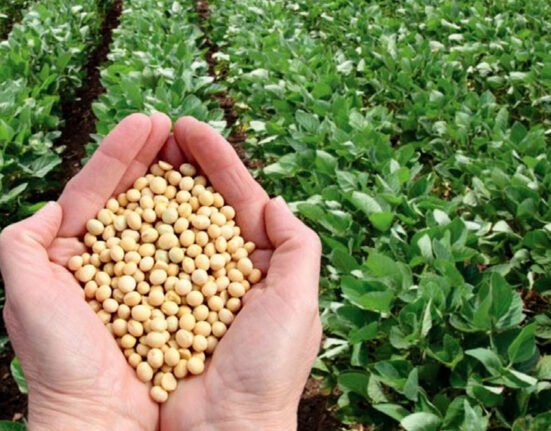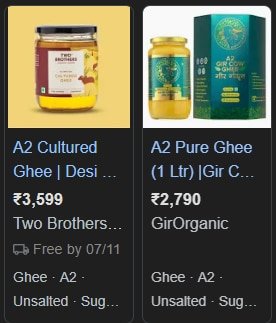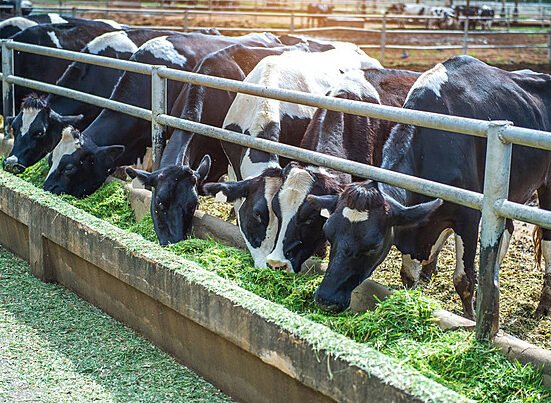As India and the United States advance negotiations toward a bilateral trade agreement (BTA), a timely working paper by NITI Aayog proposes a pragmatic roadmap to unlock agricultural trade opportunities while safeguarding domestic interests. Authored by NITI Aayog Member Ramesh Chand and Senior Adviser Raka Saxena, the paper recommends a dual-track strategy—balancing short-term tariff reductions with long-term structural reforms to improve Indian agriculture’s global competitiveness.
The proposal follows a recent visit by a US trade delegation to India (June 4–10), with follow-up negotiations now being conducted virtually.
Strategic Recommendations: A Dual-Track Approach
The working paper, titled “Promoting India–US Agricultural Trade Under the New US Trade Regime,” urges India to consider selective tariff reductions on non-sensitive agricultural imports such as apples, almonds, pistachios, soybean oil, and corn, especially where domestic production is either seasonally constrained or of a different quality.
“Indian producers already have a comparative advantage in crops like rice and pepper. High tariffs on these goods are redundant in the US context and could be reduced to foster goodwill,” the authors argue.
Key elements of the short-term strategy include:
- Lowering tariffs on premium US apples, which do not directly compete with Indian varieties due to quality and seasonality.
- Duty concessions on US soybean oil, which could help bridge India’s edible oil deficit without disrupting domestic supply chains.
- Importing US corn for ethanol blending, with the stipulation that all by-products (e.g., DDGS) be exported to avoid GMO feed entering India’s food system.
The authors also propose processing GM soybean seeds in coastal refineries—extracting oil for domestic use and exporting the protein-rich meal, thus leveraging surplus US production while shielding Indian feed markets from GMO risks.
Call for Dairy Import Quotas
Adding to the discussion, Prashant Tripathi, founder of Jordbrukare India, noted that while India must remain cautious about liberalising its dairy sector, creating import quotas for high-value dairy ingredients could be a practical middle path.
“India should consider a controlled import quota for strategic dairy ingredients such as whey protein concentrates, lactose, and specialty milk proteins, which are essential for the growing nutrition and functional foods industry,” Tripathi said.
“These ingredients are not produced at scale in India and do not compete with fresh dairy. A quota-based system would ensure supply without compromising the livelihood of Indian dairy farmers.”
Tripathi emphasised that a data-driven import model linked to domestic manufacturing capacity and end-use industries could bridge nutritional gaps, support health-focused food processing, and align with India’s broader industrial goals.
Proposed Safeguards and Monitoring Tools
To protect domestic producers and consumers from global price shocks, NITI Aayog recommends establishing an Agri Trade Intelligence Cell. This body would monitor international supply-demand trends, track import surges, and provide policymakers with timely data.
“Safeguards must remain in place for vulnerable sectors like poultry and dairy,” the paper reiterates, reinforcing India’s long-standing caution.
Unlocking Export Opportunities
India currently exports around $5.75 billion in agricultural products to the US, led by frozen shrimp, spices, basmati rice, tea, and coffee. The working paper advocates for greater US market access for these goods through duty waivers or tariff rate quotas (TRQs), especially for high-value and processed food exports.
Additionally, NITI Aayog proposes that India leverage its export potential in:
- Marine products
- Value-added cereals
- Rubber and plantation crops
Medium-Term Vision: Structural Reforms
Beyond immediate trade tactics, the paper emphasises the need for deep-rooted reforms to make Indian agriculture globally competitive. Key medium-term priorities include:
- Technology adoption and precision agriculture
- Private sector investment in agri-infrastructure
- Improved logistics and cold chains
- Efficient value chains and processing clusters
- Market liberalisation to allow better price discovery
India–US Agricultural Trade Snapshot (2024)
| Category | India Exports to the US | US Exports to India |
|---|---|---|
| Total Value | ~$5.75 billion | ~$2 billion |
| Key Products | Shrimp, spices, rice | Almonds, pistachios, and wine |
| India’s Trade Position | Surplus | Deficit |
Looking Ahead
The paper’s proposals come as trade officials from both countries work to finalise the first phase of a potential India–US BTA by fall 2025. With the global food trade undergoing a reset amid shifting geopolitics, India’s strategy will require deft navigation of both domestic sensitivities and global opportunities.
While India appears open to limited tariff concessions, it is equally focused on ensuring long-term supply security, protecting farmers, and adding value at home. Strategic use of quotas, as suggested by experts like Tripathi, could help India strike a balance between trade openness and sectoral protection.








2 Comments